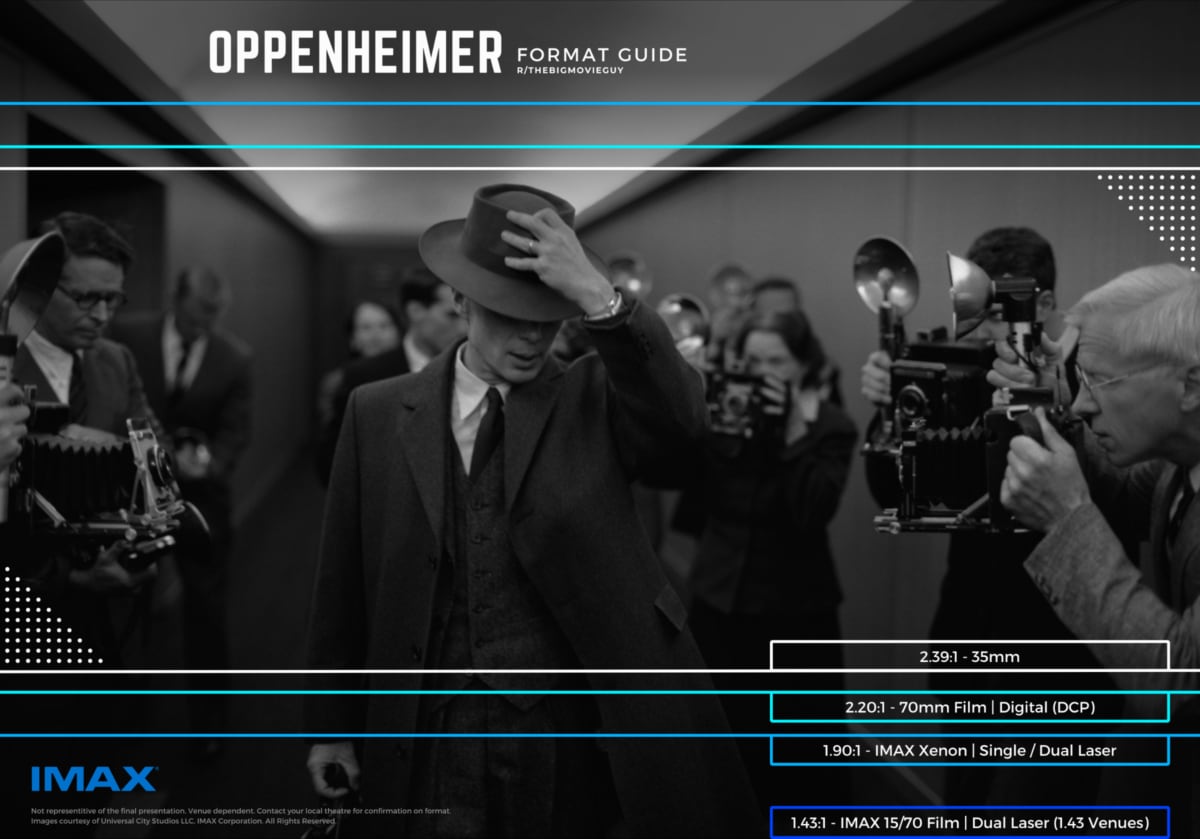OPPENHEIMER: The IMAX Difference EXPLAINED

In recent press for his latest film ‘OPPENHEIMER’, you may have heard Christopher Nolan refer to the “perforations” and the “millimetres” that are essential to his film’s viewing, but may have no idea what he is talking about. Among my friends, that is certainly the case, and I often find myself explaining the differences in the IMAX format, and how every IMAX cinema is not the same. This article will explain the differences, and tell you exactly where is best to see this release.
The Different Types of IMAX
While you may think that all IMAX cinemas are the same, you would be mistaken. There are a number of different types of IMAX that vary based on projectors and screen size. They are as follows:
- IMAX Xenon
- IMAX Laser
- 15/70mm IMAX – Nolan’s gold standard

What does 15/70mm IMAX mean?
This format is surprisingly simple once explained. The ’15’ in 15/70mm is the number of ‘perforations’ or holes in each film frame. These holes are used to hold a film strip in place and are a useful tool to measure the length of film.
You may be familiar with ’70mm’. This was more commonly used a few decades ago when films were on physical strips that light was projected through, rather than the digital files we have today. 70mm is the highest resolution of physical film that is used in cinemas.

Why Should I pick 15/70mm IMAX for
OPPENHEIMER?
15/70mm IMAX’s physical film projectors provide brighter colours and that “vintage” feeling that digital filming cannot replicate. While IMAX Digital Laser projectors provide a brighter image than regular Digital projectors, these images still do not compare to the crisp colours of the film reel.
Furthermore, 15/70mm IMAX screens provide an aspect ratio that is typically unmatched by IMAX Digital screens. Any regular cinema screen will screen the film in the widescreen 2:39:1 aspect ratio that has black bars at the top and bottom of a television screen. Any regular IMAX Digital screen will screen the film in the 1:90:1 aspect ratio, which is closer to that of your television screen. These screenings will actually show more of the image than a regular screen, as those screens cannot fit the full image, thus parts of the image are cropped out. The quality of an IMAX 15/70mm projector actually reaches 18K, while IMAX Laser reaches 4K, and IMAX Digital and standard have a 2K resolution.
However, both these systems are incapable of presenting the full, 1:43:1 aspect ratio Nolan filmed in. This aspect ratio is closer to a square and is designed to fill your entire field of view. Only cinemas with a full 1:43 IMAX screen can display the entire image, yet these are very rare (only 30 worldwide). In the UK, only three are capable of this:
- BFI IMAX (London)
- The Ronson Theater at the Science Museum IMAX (London)
- Vue Printworks IMAX (Manchester)
For international readers, a full list is available on IMAX’s website HERE.

Closing Thoughts
If you can make the journey to one of the listed cinemas, do. Even if the journey is hours away, it’s worth it. I’ve made several long journeys to see IMAX films in their intended format and it’s been worth it every time. I was actually lucky enough to see Nolan’s Interstellar and Tenet in the intended format and I can’t stress the difference of experience you’ll have. Make the journey and thank me later.
You might like










